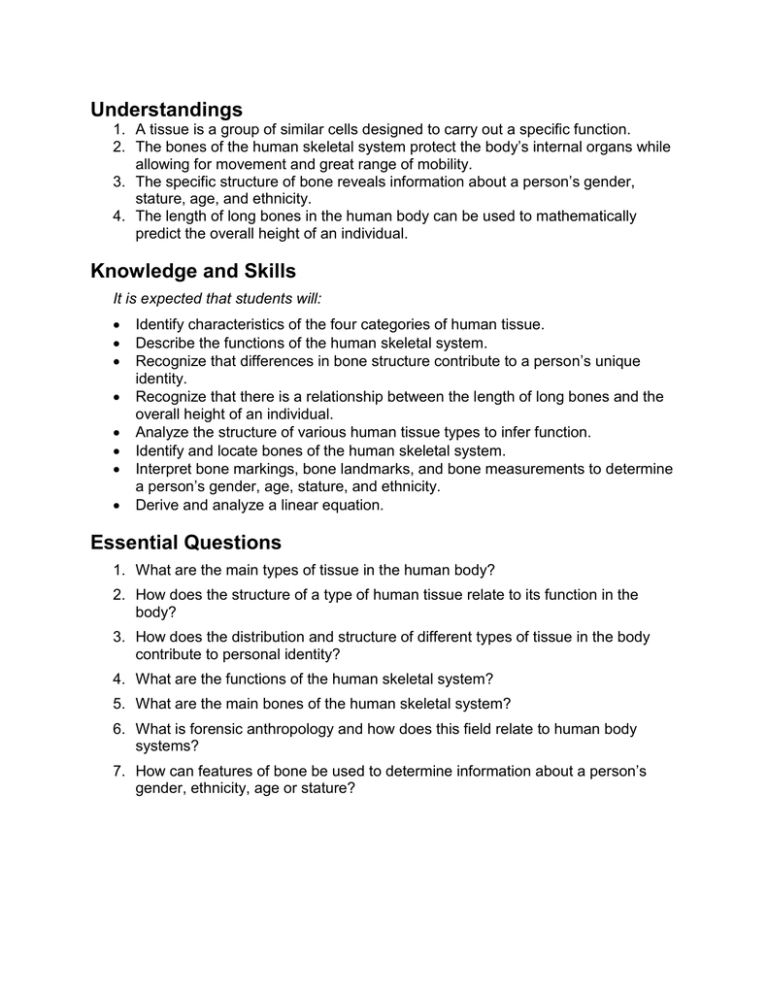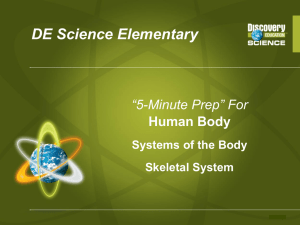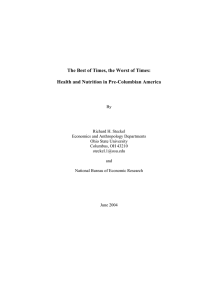Knowledge and Skills
advertisement

Understandings 1. A tissue is a group of similar cells designed to carry out a specific function. 2. The bones of the human skeletal system protect the body’s internal organs while allowing for movement and great range of mobility. 3. The specific structure of bone reveals information about a person’s gender, stature, age, and ethnicity. 4. The length of long bones in the human body can be used to mathematically predict the overall height of an individual. Knowledge and Skills It is expected that students will: Identify characteristics of the four categories of human tissue. Describe the functions of the human skeletal system. Recognize that differences in bone structure contribute to a person’s unique identity. Recognize that there is a relationship between the length of long bones and the overall height of an individual. Analyze the structure of various human tissue types to infer function. Identify and locate bones of the human skeletal system. Interpret bone markings, bone landmarks, and bone measurements to determine a person’s gender, age, stature, and ethnicity. Derive and analyze a linear equation. Essential Questions 1. What are the main types of tissue in the human body? 2. How does the structure of a type of human tissue relate to its function in the body? 3. How does the distribution and structure of different types of tissue in the body contribute to personal identity? 4. What are the functions of the human skeletal system? 5. What are the main bones of the human skeletal system? 6. What is forensic anthropology and how does this field relate to human body systems? 7. How can features of bone be used to determine information about a person’s gender, ethnicity, age or stature?





